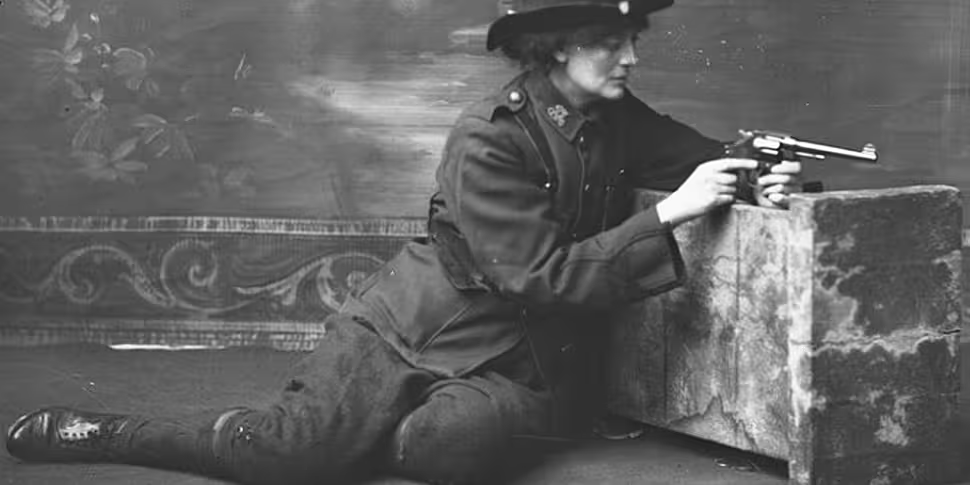Women were integral to the Easter Rising with approximately 300 ‘out’ in 1916. Though well remembered for providing medical care and ensuring the supply of food and provisions during the fighting, they also acted as vital frontline personnel. They were leaders, fighters, and messengers without whom the rebels’ six day stand would have been much shorter. In the years that followed the Rising these women were airbrushed from history, thanks to recent study they have started to get the recognition they deserve.
The Proclamation of the Irish Republic begins by addressing “Irishmen and Irishwomen” before delivering its call to arms. This seems like a massive step at a time when women didn’t have the vote in most of the world. And for most who read these words in the ensuing news reports such parity between the sexes was scandalous.
Those who came out in rebellion in 1916 were hardly representatives of the establishment though and their views on women and women’s equality, especially the socialist Citizens Army, would have been far more in line with fellow revolutionary movements across Europe. In 1912 the British suffragettes had escalated their campaign for the vote, bombing or setting ablaze several churches in 1914 alone. Women also played a vital role in the two Russian revolutions of 1917 and were duly rewarded with equal rights in the new Soviet Socialist Republics.
The reaction in Ireland to the women in the fighting was very dismissive. General Maxwell called them “silly little girls” and some of their own comrades had little time for them. As Sinead McCoole, author of Easter Widows, explains: “some of [the women] forcing their way into areas where they’re not really welcomed in the beginning, but are then accepted because they are necessary”.
This animosity toward women continued to simmer in Ireland after the Easter Rising and, once independence was secured, the state began to downplay the role they played. This is most evident in the tale of Margaret Skinnider. An active sniper, commander of five men, and the only woman to be wounded during the fighting, Skinnider was refused a Military Service Pension multiple times by the newly formed Irish state on the grounds that it was “applicable to soldiers as generally understood in the masculine sense”.
Though the state finally approved Skinnider’s pension in 1938 this was a full 13 years after her initial application. UCD historian Mary McAuliffe recounts how Skinnider relayed messages between some rebel outposts with “bullets hitting her bicycle wheel as it went along and she could hear the noise of it”. Hearing this it’s hard to imagine why so many applications would be turned down.
But turned down they were and, aside from prominent figures like Constance Markievicz, the women of 1916 began to be forgotten. In conservative Catholic Ireland fighting and revolution was the preserve of men. The first histories focused on the male leaders of 1916, the War of Independence, and the Civil War while women were pushed back into their traditional roles; they were still acknowledged to have taken part but only really as nurses and cooks.
The later release of state documents and papers on the Rising sparked renewed interest and a redrafting of the history. Women were being rediscovered and their roles and contributions recognised. Much remains to be done though as figures like Elizabeth O’Farrell, obscured behind Patrick Pearse in the famous image of surrender, are still overlooked in popular representation.
This was a woman who was central to the ending of the fighting and, by extension, the saving of so many lives. As Sinead explains: “[Elizabeth] went to all the different outposts with the surrender document, at all times risking her life”. Is this really a woman who deserves little more than a footnote in most history books? And what of all the other Irishwomen who served alongside Irishmen during 1916? Do they not deserve remembrance and recognition?
Join Talking History’s Professor Patrick Geoghegan as he talks with a panel of experts about the women of 1916, how they have been forgotten, and how we have begun to rediscover them and their exploits.









